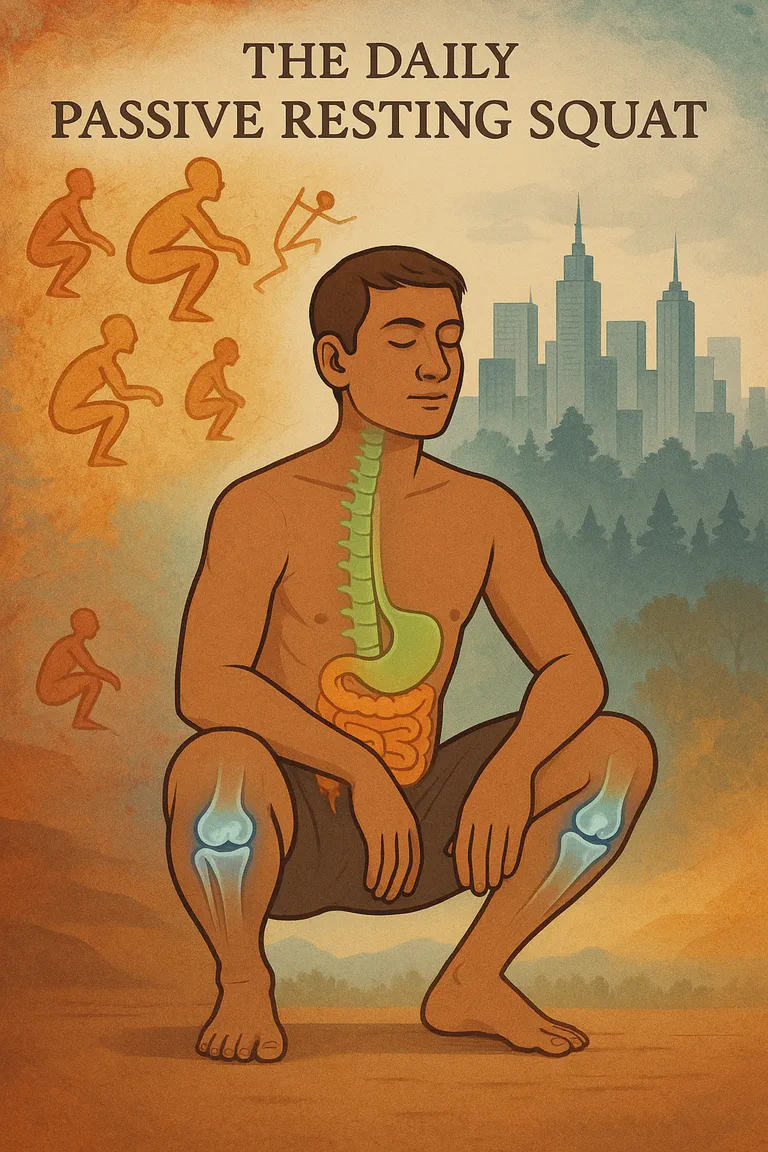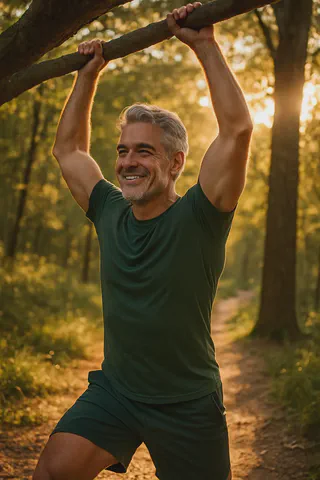History: The Evolution of a Natural Posture
The deep squatting position has been an integral part of human movement patterns for millennia [1] . Archaeological evidence from ancient civilizations across Africa, Asia, and Europe reveals depictions of people in resting squat positions in cave paintings and pottery designs dating back thousands of years. Traditional societies, such as the Hadza hunter-gatherers of Tanzania and various indigenous cultures in South America, continue to use the deep squat as their primary resting position [1] .
The shift away from this natural posture began with the Industrial Revolution and the widespread adoption of chairs. This transition accelerated in the 20th century with modern furniture design and urbanization, creating what researchers call an "inactivity mismatch" where our physiology struggles to adapt to modern sedentary habits [2] .
Introduction: The Underappreciated Power of Rest
In contemporary society, sedentary lifestyles have led to a decline in fundamental human movements, with the deep squat being one of the most notable casualties [2] . This shift away from natural postures has created an "inactivity mismatch" where our physiology struggles to adapt to modern sedentary habits. The passive resting squat offers a solution - not as exercise, but as a return to our body's natural design.
Reclaiming Our Primal Posture
Babies instinctively adopt the deep squat position, demonstrating its innate nature in human movement [3] . Anthropological evidence shows that many cultures, particularly in Asia and among hunter-gatherer populations like the Hadza, maintain squatting as a primary resting position [1] . This "active rest" posture engages muscles more than chair sitting, promoting metabolic health while minimizing caloric expenditure.
The Biomechanics of Stillness
While distinct from active squats, the passive resting squat maintains subtle muscle engagement in the lower limbs, core, and ankle stabilizers [4] . This low-level activity supports blood flow and joint health without significant muscular fatigue. Proper spinal alignment remains crucial even in passive holds to manage compressive forces effectively.
Physical Transformations Through Consistency
Long-term practice yields remarkable benefits:
- Improved joint mobility in hips, ankles, and knees [5]
- Enhanced spinal decompression and posture [6]
- Increased ankle dorsiflexion allowing deeper squats without heel elevation
- Digestive improvements through optimized colon alignment [7]
Mind-Body Connection in Repose
The practice cultivates body awareness and interoception - the ability to sense internal bodily states [8] . This heightened awareness contributes to stress reduction and emotional regulation, aligning with research showing physical activity's positive impact on mental well-being [9] .
The 100-Day Journey
The phased progression outlined in the original research demonstrates a clear path to mastery:
| Phase/Day Range | Key Characteristics | Common Challenges | Time Goals |
|---|---|---|---|
| Day 1 | Initial awakening to physical limitations | Significant discomfort in ankles, knees, and back | Accumulate short bursts (30s x 5-10) |
| Days 2-3 | Resistance phase with persistent aches | Doubts about safety and effectiveness | 5-7 minutes total |
| Days 4-6 | Noticeable improvements begin | Maintaining consistency | Gradual increase |
| Day 7 | First major shift in comfort | Reduced reliance on support | 15-20 minutes |
| Days 7-14 | Building consistency | Tracking progress | 30 minutes by Day 14 |
| Day 30 | Embodiment phase | Spontaneous integration into daily life | Natural posture |
| Days 50-100 | Complete lifestyle transformation | Teaching others | Automatic habit |
Practical Implementation Strategies
To facilitate adoption:
- Use Support and Elevation: Elevate heels on books and use TRX straps for balance in early stages [10]
- Focus on Accumulated Time: Aim for total daily time rather than continuous holds
- Integrate into Daily Life: Replace sitting with squatting during routine activities
- Minute-per-Hour Method: Squat for one minute every hour [11]
- Track Progress: Use timers and journals to visualize improvement
Overcoming Initial Resistance
The first week presents significant challenges as the body relearns neglected movement patterns. However, persistence through this phase typically yields noticeable improvements by day seven [12] . Initial discomfort should be viewed as a normal adaptation process rather than a sign of harm.
- The passive resting squat is a fundamental human movement pattern with profound physical and mental benefits
- Consistent daily practice over 100 days leads to transformative improvements in joint mobility and posture
- Gradual adaptation with proper support is key to overcoming initial discomfort
- Integrating squatting into daily routines creates lasting lifestyle change
- The practice enhances body awareness and supports digestive and mental health
References
Murphy K, Weaver C. "Janeway's Immunobiology." Garland Science. 2017;9th edition.
Abbas AK, et al. "Cellular and Molecular Immunology." Elsevier. 2018;10th edition.
Iwasaki A, Medzhitov R. "Control of adaptive immunity by the innate immune system." Nature Immunology. 2015;16(4):343-353.
Parker N, et al. "The immune system and cancer." Nature Reviews Cancer. 2021;21(9):517-534.
Tangye SG, et al. "Human B cell differentiation and the regulation of antibody responses." Nature Reviews Immunology. 2020;20(12):759-776. DOI: 10.1016/j.cell.2021.05.033
Artis D, Spits H. "The biology of innate lymphoid cells." Nature. 2015;517(7534):293-301.
Nusenzweig MC, Victora GD. "Germinal centers in health and disease." Nature Reviews Immunology. 2020;20(11):655-667. DOI: s41577-021-00554-7
Kawakami T, Galli SJ. "Regulation of mast cell and basophil function and activation by stress." Nature Reviews Immunology. 2002;2(11):845-857. DOI: 10.1016/j.cgh.2020.12.032


